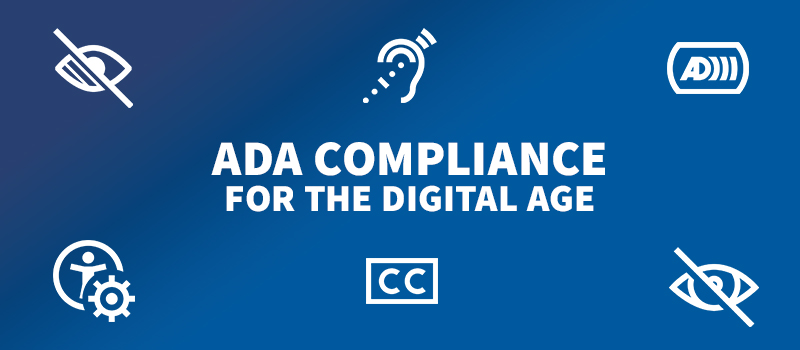
Web Accessibility Simplified: ADA Essentials for Today’s Small Businesses
At 3C, we are committed to helping small businesses make digital accessibility a priority. Our latest webinar on ADA Compliance for the Digital Age aims to empower small business leaders with practical tools and insights needed to meet ADA web compliance standards, making their online presence more inclusive and accessible.
Why Accessibility Matters
ADA compliance isn’t just a box to check – it’s about ensuring all customers can access your products and services. Meeting the Web Content Accessibility Guidelines (WCAG) can enhance your website’s usability for everyone, including people with disabilities.
What is WCAG?
WCAG, developed by the World Wide Web Consortium (W3C), sets the gold standard for digital accessibility. By following these guidelines, your site can be more accessible and user-friendly for people with disabilities.
Best Practices for Implementation
- Engage Users with Disabilities: Consider user testing with people who have disabilities. Their feedback can be invaluable for understanding real-world challenges.
- Streamline Accessibility Efforts: Consider website tool plugins like accessiBe to automate accessibility checks. Regular audits and testing are crucial to ensure your website remains accessible for all users.
Top 10 Essential WCAG Criteria for Small Businesses
- Provide Text Alternatives (Alt Text) for Images
Alt text helps screen readers describe images for visually impaired users (WCAG 2.0, 1.1.1)
- Keyboard Accessibility
Ensure all website features are accessible via keyboard to support users with mobility impairments. (WCAG 2.0, 2.1.1).
Keyboard Accessibility Image Example
- Clear and Consistent Navigation
Provide consistent navigation options across your site. Users should be able to navigate easily without getting lost or confused (WCAG 2.0, 2.4.5).
- Readable Text with Sufficient Contrast
Ensure that text has a high contrast ratio against its background (e.g., black text on a white background). This makes reading easier for those with visual impairments (WCAG 2.0, 1.4.3).
Text with Sufficient Contrast Example
- Use Descriptive Link Text
Links should clearly describe where they lead. Avoid using generic phrases like “click here” that don’t convey meaning to screen readers (WCAG 2.0, 2.4.4).
Descriptive Link Text Photo Example
- Responsive Design for Mobile Accessibility
Ensure that your website is responsive and works well on mobile devices. This helps users with disabilities who might use different devices and screen sizes (WCAG 2.0, 1.4.10).
Mobile Accessibility Photo Example
- Include Captions and Transcripts for Video
Videos should have captions and audio descriptions to ensure accessibility for users who are deaf or hard of hearing (WCAG 2.0, 1.2.2).
Captions & Transcripts for Video Example
- Error Identification and Suggestions
Make sure forms and input fields provide clear error messages and suggestions for corrections. This aids users who might be using screen readers or those who need extra guidance (WCAG 2.0, 3.3.1).
Error Identification Photo Example
- Skip Navigation Links
Include “Skip to main content” links at the top of your website. This allows users who use screen readers to bypass repetitive navigation links and go straight to the content (WCAG 2.0, 2.4.1).
- Adjustable Text Size
Allow users to adjust text size without breaking the website layout. This is especially helpful for those with low vision who need larger text (WCAG 2.0, 1.4.4).
Adjustable Text Size Photo Example
ADA compliance is a journey, not a destination. By following these guidelines, you’re on the right path towards creating a more welcoming and inclusive experience for everyone.
For more information on ADA compliance and the principles of Web Content Accessibility Guidelines (WCAG), here is the link to our webinar recording.
















